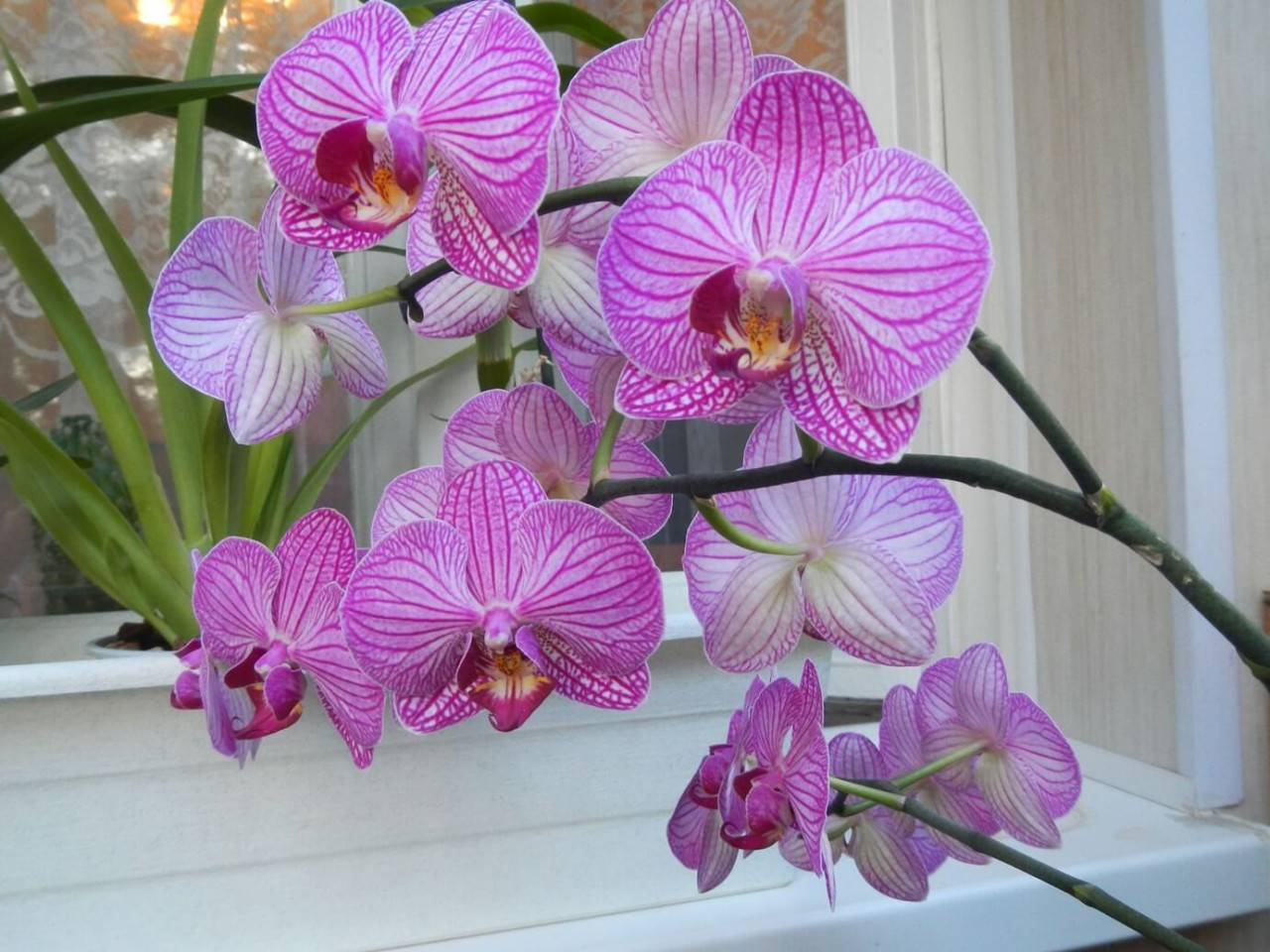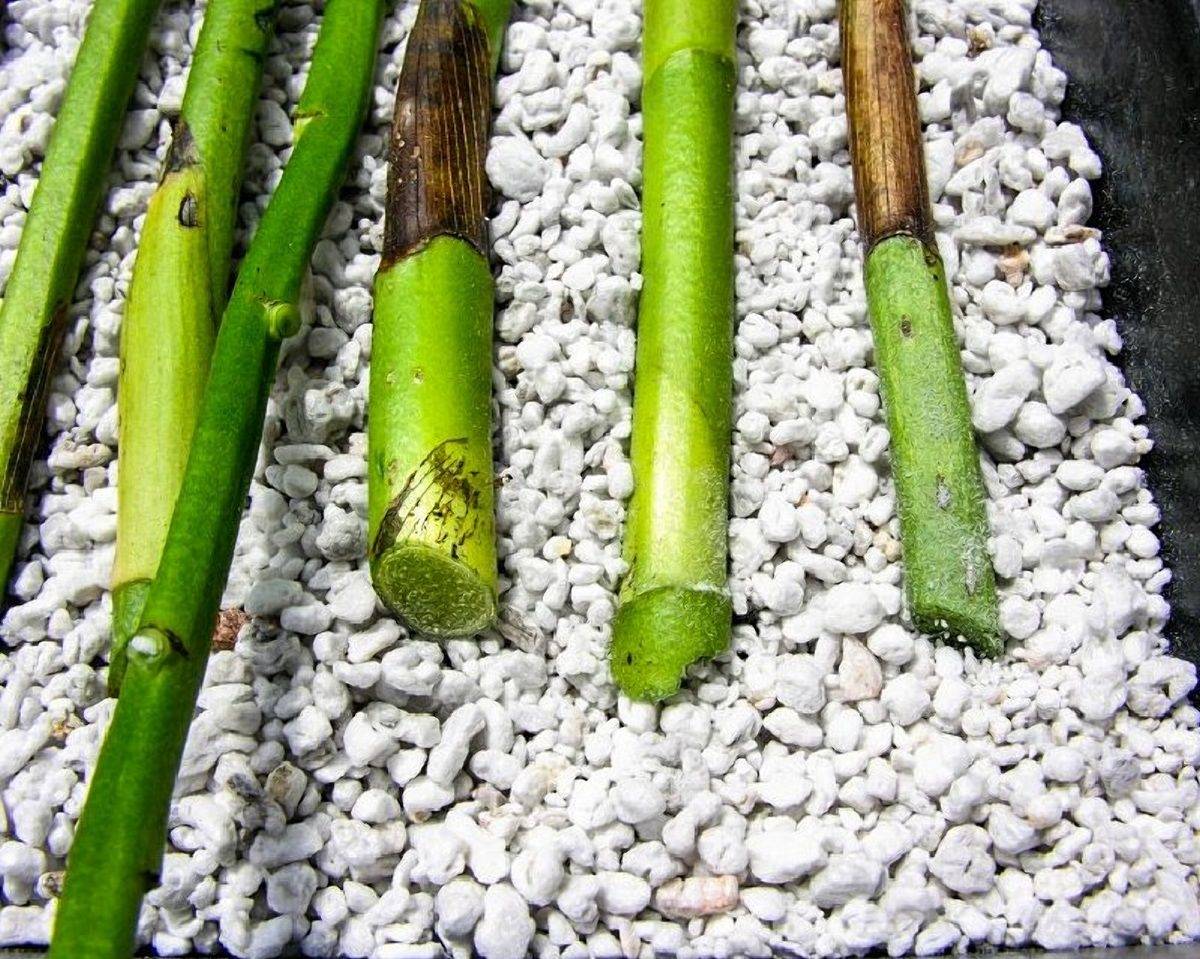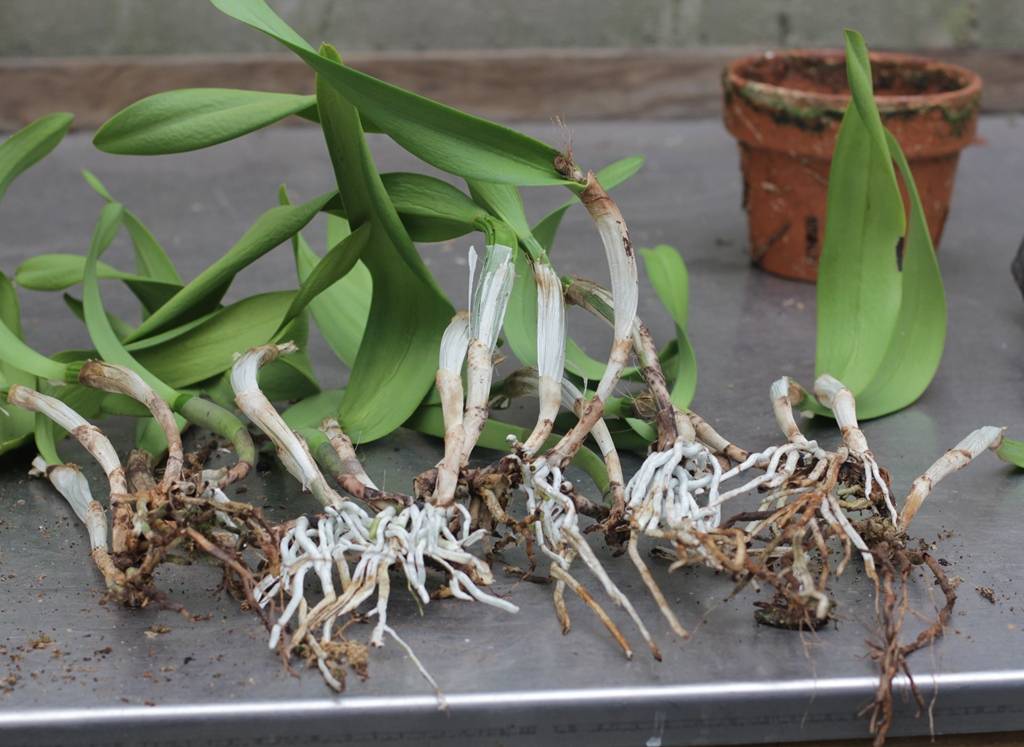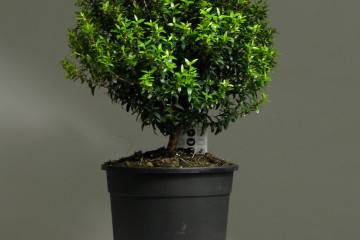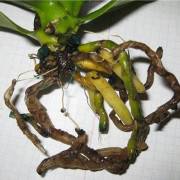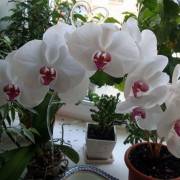Phalaenopsis reproduction at home: examples by children and cuttings
Content:
Orchids drive many flower growers crazy. Their charming appearance and unpretentiousness allow them to become the main decoration of any window sill, interior. The cost of one plant is rather big, so many try to propagate them on their own. The following will describe how to propagate the Phalaenopsis orchid.
Phalaenopsis: breeding at home
Many growers know how the phalaenopsis plant reproduces. This can be done using more than one method, and this does not necessarily require certain skills.
Roots
Phalaenopsis can be propagated by the root method, but only if they grow using pseudobulbs. In this case, it is possible to divide the bush into several parts. The considered type of orchid with this method can be propagated if:
- the plant died and the rhizome survived;
- the flower needs rejuvenation. To do this, you must completely cut off the top and leave it for root growth.
The flower should grow for five years, then its root system will grow sufficiently. Only with developed shoots can they be separated.
Children
If you need another orchid, child reproduction is considered the easiest method. To do this, it is enough to separate the baby itself, which grows from a growth bud located on a peduncle or in the leaf axils. Babies can form on a plant that is over 2 years old and has at least four leaves.
A change in room conditions will help to induce their education. To do this, it is important to adhere to the following scheme:
- watering stops for 14 days until the roots begin to turn white;
- the lighting should be bright, but the sun's rays should not hit the leaves;
- the flower should be in a room with high air humidity (at least 70%);
- at night, the air temperature must be lowered by 10 °.
Only once a day is the flower placed in the open sun. The scales should be removed from the kidney as carefully as possible, then it should be lubricated with cytokinin ointment, moistened moss should be applied on top and covered with a film. The formed baby, after separation from the main plant, is laid aside for the appearance of roots, and then placed in the ground.
Cuttings
How to propagate the phalaenopsis orchid by cuttings? For this purpose, you need to use segments of a peduncle with a dormant bud. They are placed in a moist substrate under a small greenhouse, which should be regularly ventilated.
Peduncle
In addition to the previous methods, you can use peduncles. How can you propagate phalaenopsis in this way? In order for the process to go satisfactorily, you should choose a peduncle, adhering to the following recommendations:
- the plant must have at least four leaves;
- only a healthy stem fits;
- arrow length can be any, but with a dormant lower kidney.
Only a correctly selected peduncle can develop for further growth. Therefore, his choice must be carried out carefully.
Home conditions for breeding
Phalaenopsis orchid is easy to reproduce at home. For a successful result, it is recommended to provide the flower with the following conditions.
Air humidity
Phalaenopsis grows naturally with high humidity. The indicator should not exceed 80%.
Temperature
During the breeding season, it is better to maintain the temperature regime within 28-30 ° C. Raising or downgrading can prevent a new flower from emerging.
Flowering time
The best time to reproduce is when flowering ends. This is the most favorable period.
Options for planting children
Growing orchid plants is straightforward, but requires some steps to avoid injury to the mother plant. By following these rules, you can get by with a small sacrifice:
- when separating the baby from the peduncle, you must leave at least 1 cm from the shoot;
- when an orchid is propagated by roots, you need to make sure that the baby has roots;
- cutting off the layers from the axils of the leaves, you need to grab 1 cm of the mother flower.
Further care of children
When using any method of propagation, the cutting should be placed in a specific greenhouse environment. Temperature and humidity conditions must be controlled prior to root formation. To root the baby, growers use moss to maintain the required moisture level.
Possible breeding errors
During the reproduction of phalaenopsis at home, the florist may face a number of problems that arise when mistakes are made. The most common of these is when an unhealthy plant was picked up for reproduction. A flower with a black rhizome, which has a layer of mucus, or an unnatural color of the leaves indicates that the plant is not ready for the reproduction procedure. An exception is the breeding method in water.
Tips for a successful procedure:
- it is necessary to sterilize all sections;
- during reproduction, the plant is recommended to be protected from direct sunlight;
- it is important to maintain the required temperature, humidity and lighting. Changes in these indicators can lead to irreversible consequences.
Phalaenopsis can be propagated using different methods. A new flower begins to bloom in the second or third year after planting in the substrate. This fragile exotic plant needs to maintain certain conditions for the formation of a strong root system and further full development. In return, it will thank you with extraordinary flowering.
